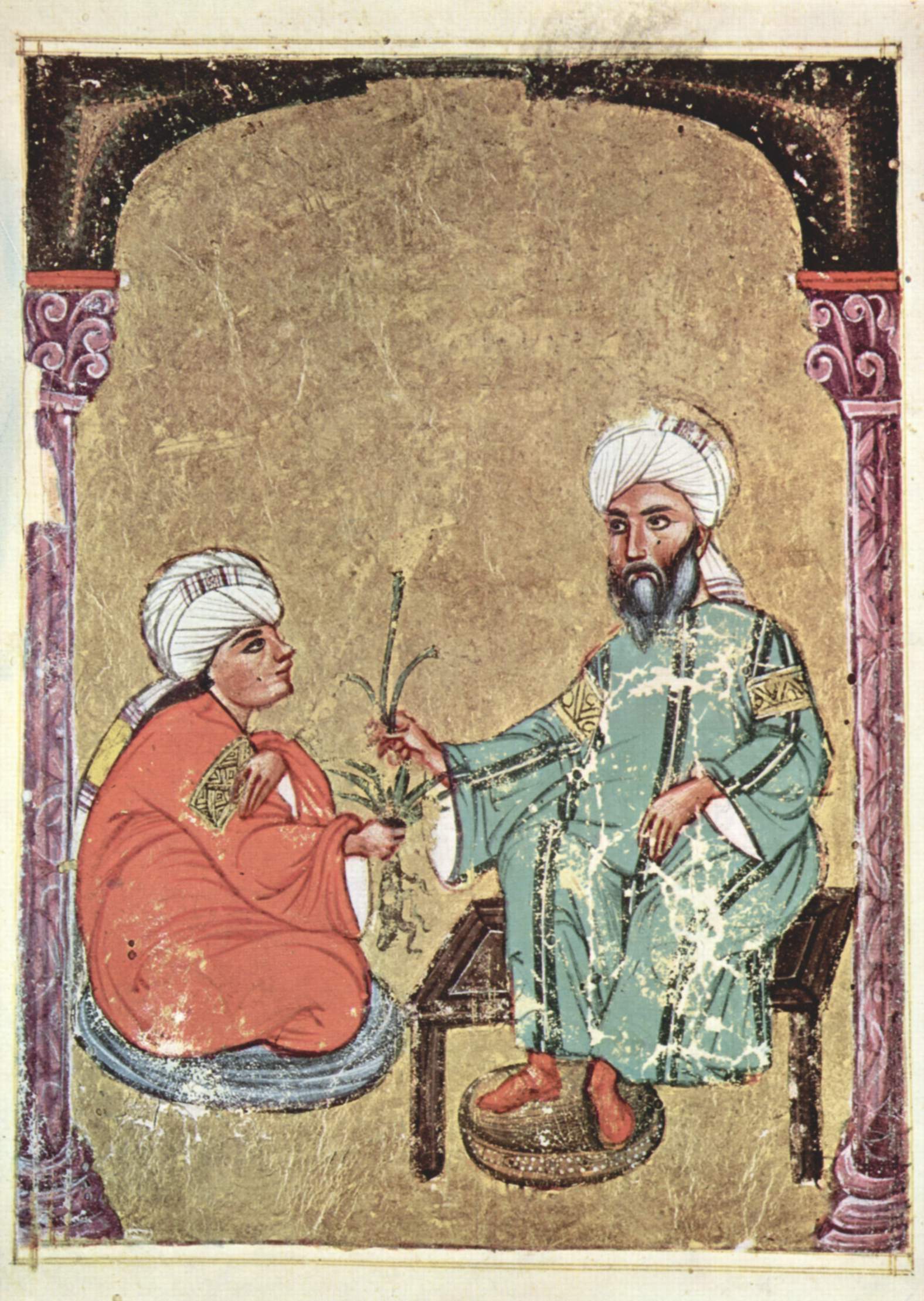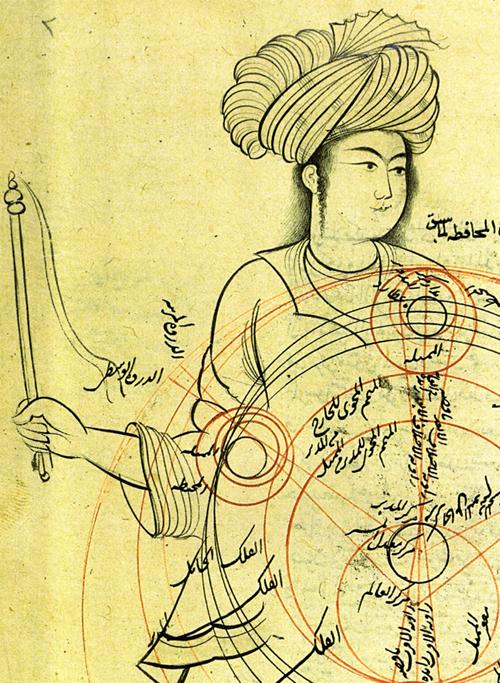|
Sabur Ibn Sahl
Sābūr ibn Sahl (; d. 869 CE) was a 9th-century Persian Christian physician from the Academy of Gundishapur. Among other medical works, he wrote one of the first medical books on antidotes called ''Aqrabadhin'' (), which was divided into 22 volumes, and which was possibly the earliest of its kind to influence Islamic medicine In the history of medicine, "Islamic medicine" is the science of medicine developed in the Middle East, and usually written in Arabic, the ''lingua franca'' of Islamic civilization. Islamic medicine adopted, systematized and developed the .... This antidotary enjoyed much popularity until it was superseded Ibn al-Tilmidh's version later in the first half of twelfth century. See also * List of Iranian scientists References Further reading * F. Wustenfled: arabische Aerzte (25, 1840). 869 deaths Pharmacologists of medieval Iran 9th-century Iranian physicians People from Baghdad Iranian Christians Year of birth unknown Members of th ... [...More Info...] [...Related Items...] OR: [Wikipedia] [Google] [Baidu] |
Persian People
The Persians are an Iranian ethnic group who comprise over half of the population of Iran. They share a common cultural system and are native speakers of the Persian language as well as of the languages that are closely related to Persian. The ancient Persians were originally an ancient Iranian people who had migrated to the region of Persis (corresponding to the modern-day Iranian province of Fars) by the 9th century BCE. Together with their compatriot allies, they established and ruled some of the world's most powerful empires that are well-recognized for their massive cultural, political, and social influence, which covered much of the territory and population of the ancient world.. Throughout history, the Persian people have contributed greatly to art and science. Persian literature is one of the world's most prominent literary traditions. In contemporary terminology, people from Afghanistan, Tajikistan, and Uzbekistan who natively speak the Persian language are ... [...More Info...] [...Related Items...] OR: [Wikipedia] [Google] [Baidu] |
Christians
Christians () are people who follow or adhere to Christianity, a monotheistic Abrahamic religion based on the life and teachings of Jesus Christ. The words ''Christ'' and ''Christian'' derive from the Koine Greek title ''Christós'' (Χριστός), a translation of the Biblical Hebrew term '' mashiach'' (מָשִׁיחַ) (usually rendered as ''messiah'' in English). While there are diverse interpretations of Christianity which sometimes conflict, they are united in believing that Jesus has a unique significance. The term ''Christian'' used as an adjective is descriptive of anything associated with Christianity or Christian churches, or in a proverbial sense "all that is noble, and good, and Christ-like." It does not have a meaning of 'of Christ' or 'related or pertaining to Christ'. According to a 2011 Pew Research Center survey, there were 2.2 billion Christians around the world in 2010, up from about 600 million in 1910. Today, about 37% of all Christians live in the A ... [...More Info...] [...Related Items...] OR: [Wikipedia] [Google] [Baidu] |
Academy Of Gundishapur
The Academy of Gondishapur ( fa, فرهنگستان گندیشاپور, Farhangestân-e Gondišâpur), also known as the Gondishapur University (دانشگاه گندیشاپور Dânešgâh-e Gondišapur), was one of the three Sasanian centers of education ( Ctesiphon, Ras al-Ayn, Gundeshapur) and academy of learning in the city of Gundeshapur, Iran during late antiquity, the intellectual center of the Sasanian Empire. It offered education and training in medicine, philosophy, theology and science. The faculty were versed in Persian traditions. According to ''The Cambridge History of Iran'', it was the most important medical center of the ancient world during the 6th and 7th centuries. Under the Pahlavi dynasty, the heritage of Gondeshapur was memorialized by the founding of the ''Jondishapur University'' and its twin institution ''Ahvaz Jundishapur University of Medical Sciences'', near the city of Ahvaz in 1955. After Iranian revolution in 1979, the university was r ... [...More Info...] [...Related Items...] OR: [Wikipedia] [Google] [Baidu] |
Antidote
An antidote is a substance that can counteract a form of poisoning. The term ultimately derives from the Greek term φάρμακον ἀντίδοτον ''(pharmakon) antidoton'', "(medicine) given as a remedy". Antidotes for anticoagulants are sometimes referred to as reversal agents. The antidotes for some particular toxins are manufactured by injecting the toxin into an animal in small doses and extracting the resulting antibodies from the host animals' blood. This results in an antivenom that can be used to counteract venom produced by certain species of snakes, spiders, and other venomous animals. Some animal venoms, especially those produced by arthropods (such as certain spiders, scorpions, and bees) are only potentially lethal when they provoke allergic reactions and induce anaphylactic shock; as such, there is no "antidote" for these venoms; however anaphylactic shock can be treated (e.g. with epinephrine). Some other toxins have no known antidote. For example, the p ... [...More Info...] [...Related Items...] OR: [Wikipedia] [Google] [Baidu] |
Islamic Medicine
In the history of medicine, "Islamic medicine" is the science of medicine developed in the Middle East, and usually written in Arabic, the ''lingua franca'' of Islamic civilization. Islamic medicine adopted, systematized and developed the medical knowledge of classical antiquity, including the major traditions of Hippocrates, Galen and Dioscorides. During the post-classical era, Middle Eastern medicine was the most advanced in the world, integrating concepts of ancient Greek, Roman, Mesopotamian and Persian medicine as well as the ancient Indian tradition of Ayurveda, while making numerous advances and innovations. Islamic medicine, along with knowledge of classical medicine, was later adopted in the medieval medicine of Western Europe, after European physicians became familiar with Islamic medical authors during the Renaissance of the 12th century. Medieval Islamic physicians largely retained their authority until the rise of medicine as a part of the natural ... [...More Info...] [...Related Items...] OR: [Wikipedia] [Google] [Baidu] |
Ibn Al-Tilmidh
Amīn al-Dawla Abu'l-Ḥasan Hibat Allāh ibn Ṣaʿīd ibn al-Tilmīdh ( ar, هبة الله بن صاعد ابن التلميذ; 1074 – 11 April 1165) was a Christian Arab physician, pharmacist, poet, musician and calligrapher of the medieval Islamic civilization. Ibn al-Tilmidh worked at the ʻAḍudī hospital in Baghdad where he eventually became its chief physician as well as court physician to the caliph Al-Mustadi, and in charge of licensing physicians in Baghdad. He mastered the Arabic, Persian, Greek and Syriac languages. He compiled several medical works, the most influential being ''Al-Aqrābādhīn al-Kabir'', a pharmacopeia which became the standard pharmacological work in the hospitals of the Islamic civilization, superseding an earlier work by Sabur ibn Sahl. His poetry included riddles: Abū al-Maʿālī al-Ḥaẓīrī quotes five of them, and a verse solution by al-Tilmīdh to another riddle, in his ''Kitāb al-iʿjāz fī l-aḥājī wa-l-alghāz'' (Ini ... [...More Info...] [...Related Items...] OR: [Wikipedia] [Google] [Baidu] |
List Of Iranian Scientists
The following is a non-comprehensive list of Iranian scientists, engineers, and scholars who lived from antiquity up until the beginning of the modern age. For the modern era, see List of contemporary Iranian scientists, scholars, and engineers. For mathematicians of any era, see List of Iranian mathematicians. (A person may appear on two lists, e.g. Abū Ja'far al-Khāzin.) A * Abdul Qadir Gilani (12th century) theologian and philosopher * Abu al-Qasim Muqane'i (10th century) physician * Abu Dawood (c. 817–889), Islamic scholar * Abu Hanifa (699–767), Islamic scholar * Abu Said Gorgani (10th century) * 'Adud al-Dawla (936–983), scientific patron * Ahmad ibn Farrokh (12th century), physician * Ahmad ibn 'Imad al-Din (11th century), physician and chemist * Alavi Shirazi (1670–1747), royal physician to Mughal Empire of South Asia * Amuli, Muhammad ibn Mahmud (c. 1300–1352), physician * Abū Ja'far al-Khāzin (900–971), mathematician and astronomer * Ansari ... [...More Info...] [...Related Items...] OR: [Wikipedia] [Google] [Baidu] |
869 Deaths
__NOTOC__ Year 869 ( DCCCLXIX) was a common year starting on Saturday (link will display the full calendar) of the Julian calendar. Events By place Byzantine Empire * Summer – Emperor Basil I allies with the Frankish emperor Louis II against the Saracens. He sends a Byzantine fleet of 400 ships (according to the ''Annales Bertiniani''), under the command of Admiral Niketas Ooryphas, to support Louis (who is besieging the city port of Bari) and to clear the Adriatic Sea of Muslim raiders. * The Hagia Sophia Basilica ( church) in Constantinople suffers great damage during an earthquake, which makes the eastern half-dome collapse. Basil I orders it to be repaired. Europe * August 8 – Lothair II, King of Middle Francia (Lotharingia), dies at Piacenza, on his way home from meeting Pope Adrian II at Rome, to get assent for a divorce. Lotharingia is subsequently divided between Lothair's uncles, Charles the Bald of France and Louis the German. Britain ... [...More Info...] [...Related Items...] OR: [Wikipedia] [Google] [Baidu] |
9th-century Iranian Physicians
The 9th century was a period from 801 ( DCCCI) through 900 ( CM) in accordance with the Julian calendar. The Carolingian Renaissance and the Viking raids occurred within this period. In the Middle East, the House of Wisdom was founded in Abbasid Baghdad, attracting many scholars to the city. The field of algebra was founded by the Muslim polymath al-Khwarizmi. The most famous Islamic Scholar Ahmad ibn Hanbal was tortured and imprisoned by Abbasid official Ahmad ibn Abi Du'ad during the reign of Abbasid caliph al-Mu'tasim and caliph al-Wathiq. In Southeast Asia, the height of the Mataram Kingdom happened in this century, while Burma would see the establishment of the major kingdom of Pagan. Tang China started the century with the effective rule under Emperor Xianzong and ended the century with the Huang Chao rebellions. While the Maya experienced widespread political collapse in the central Maya region, resulting in internecine warfare, the abandonment of cities, and a ... [...More Info...] [...Related Items...] OR: [Wikipedia] [Google] [Baidu] |
People From Baghdad
A person ( : people) is a being that has certain capacities or attributes such as reason, morality, consciousness or self-consciousness, and being a part of a culturally established form of social relations such as kinship, ownership of property, or legal responsibility. The defining features of personhood and, consequently, what makes a person count as a person, differ widely among cultures and contexts. In addition to the question of personhood, of what makes a being count as a person to begin with, there are further questions about personal identity and self: both about what makes any particular person that particular person instead of another, and about what makes a person at one time the same person as they were or will be at another time despite any intervening changes. The plural form "people" is often used to refer to an entire nation or ethnic group (as in "a people"), and this was the original meaning of the word; it subsequently acquired its use as a plural form of ... [...More Info...] [...Related Items...] OR: [Wikipedia] [Google] [Baidu] |
Iranian Christians
Christianity in Iran dates back to the early years of the religion during the time of Jesus, predating Islam. The Christian faith has always comprised a minority in Iran under its previous state religions; initially Zoroastrianism in historical Persia, followed by Sunni Islam in the Middle Ages after the Arab conquest, and Shia Islam since the Safavid conversion of the 15th century; although it had a much larger representation in the past than it does today. Iranian Christians have played a significant part in the historical Christian mission: currently, there are at least 6000 churches and 380,000–1,500,000 Christians in Iran. Major denominations A number of Christian denominations are represented in Iran. Many members of the larger and older churches belong to minority ethnic groups, with the Armenians and Assyrians having their own distinctive culture and language. The members of the newer and smaller churches are drawn both from the traditionally Christian eth ... [...More Info...] [...Related Items...] OR: [Wikipedia] [Google] [Baidu] |







_1938.jpg)
